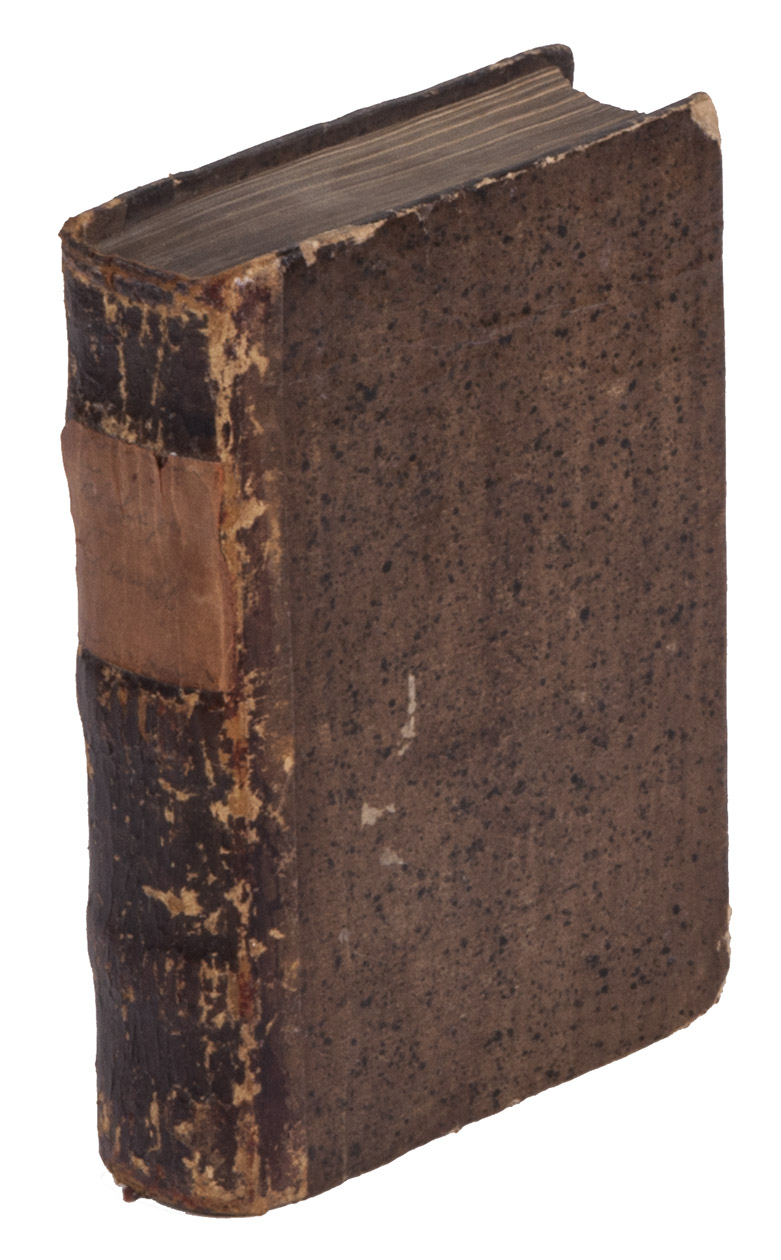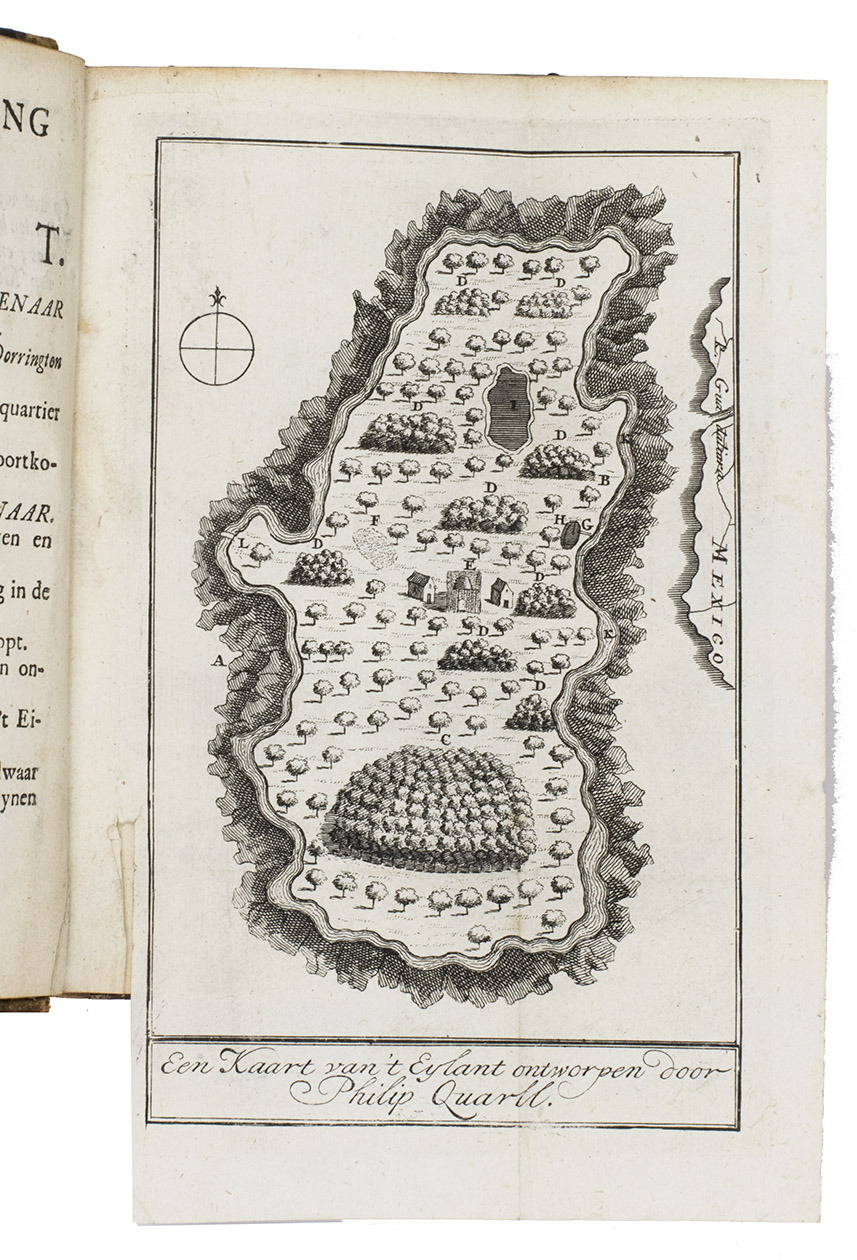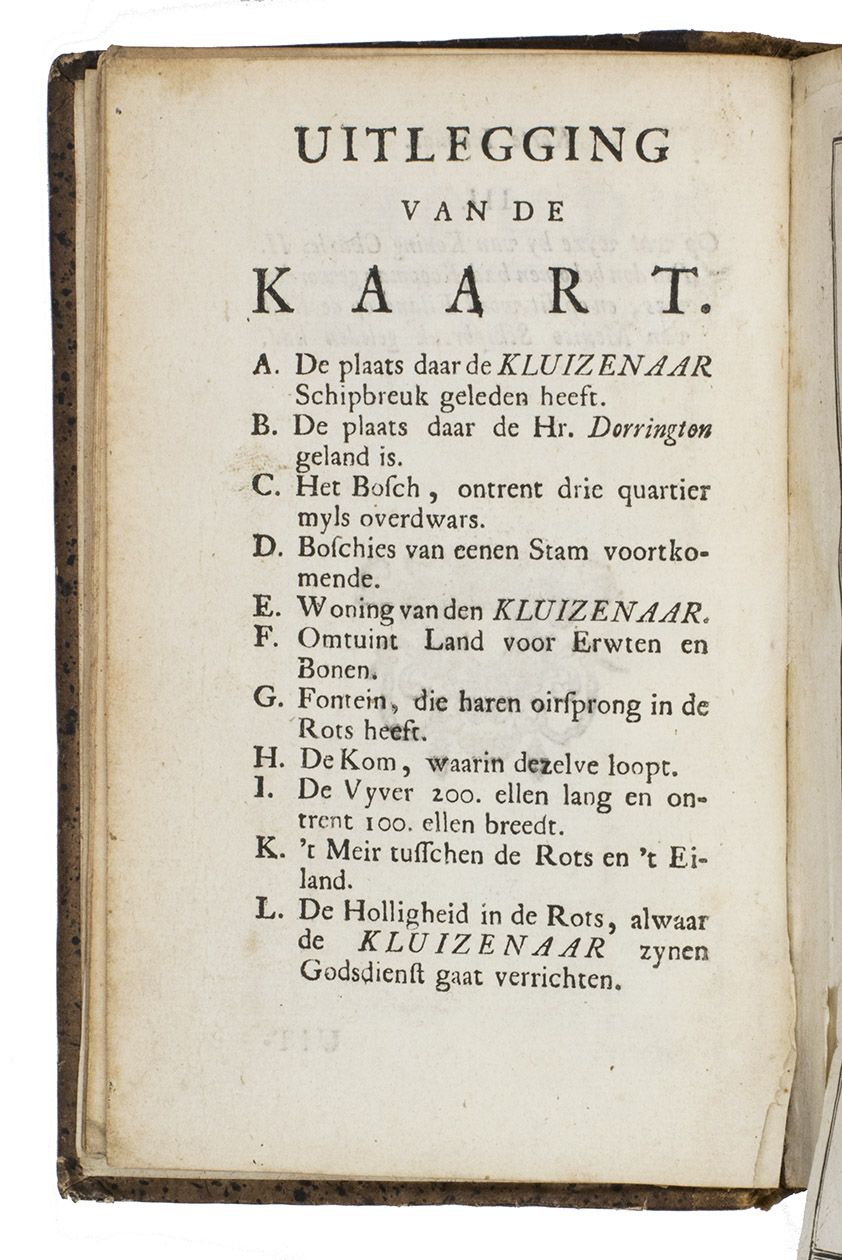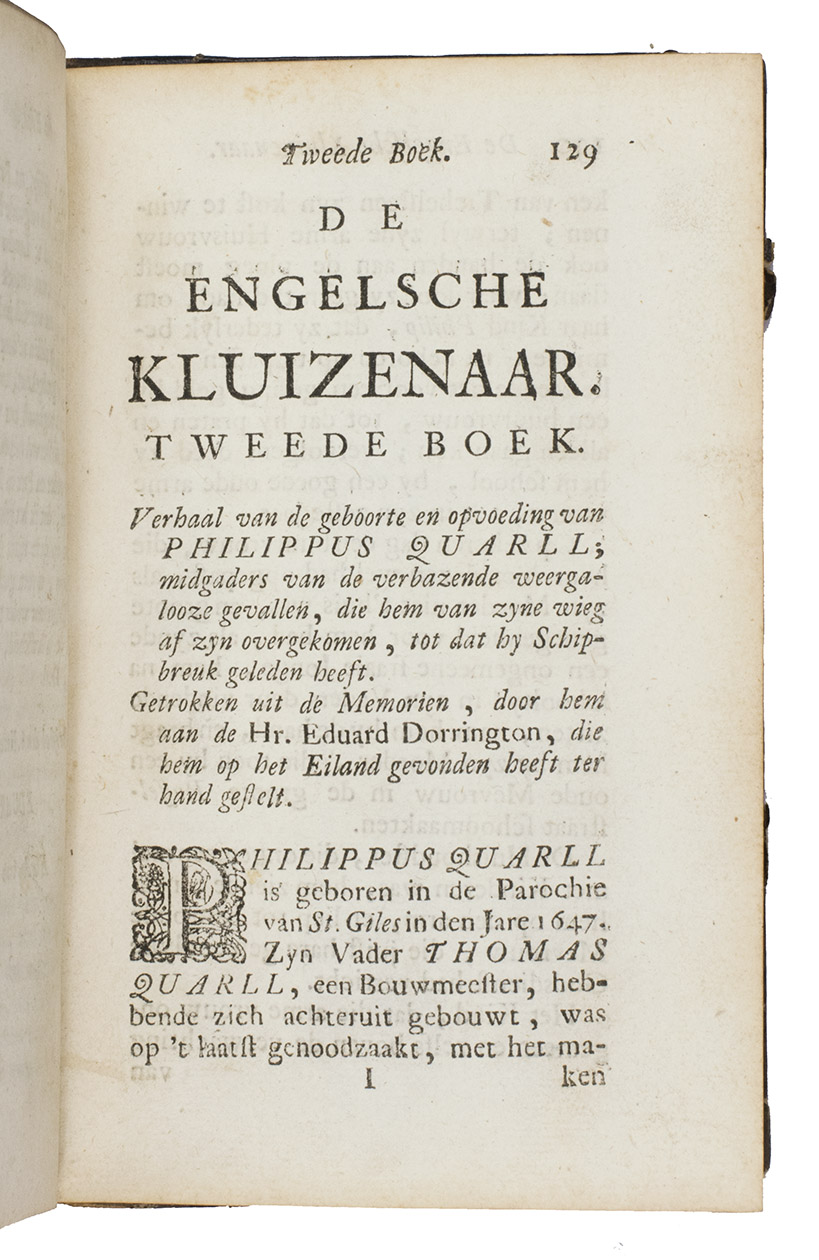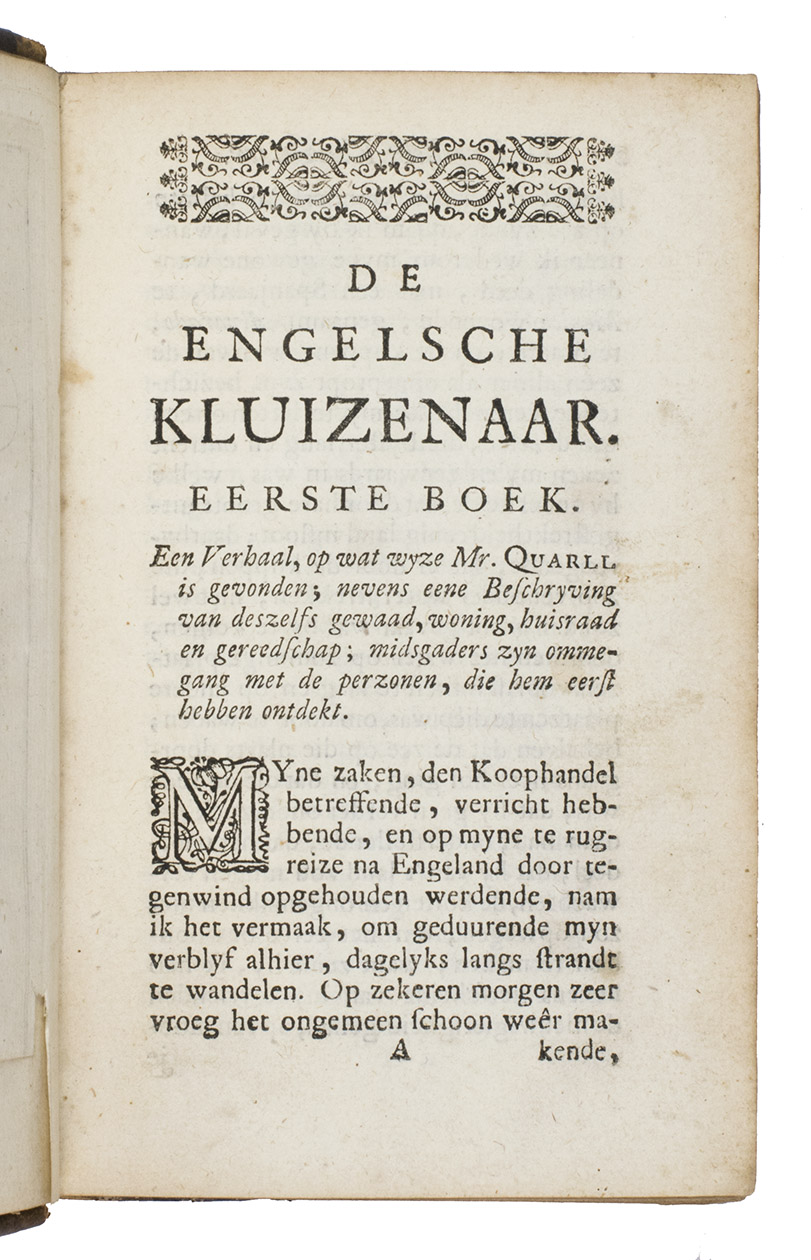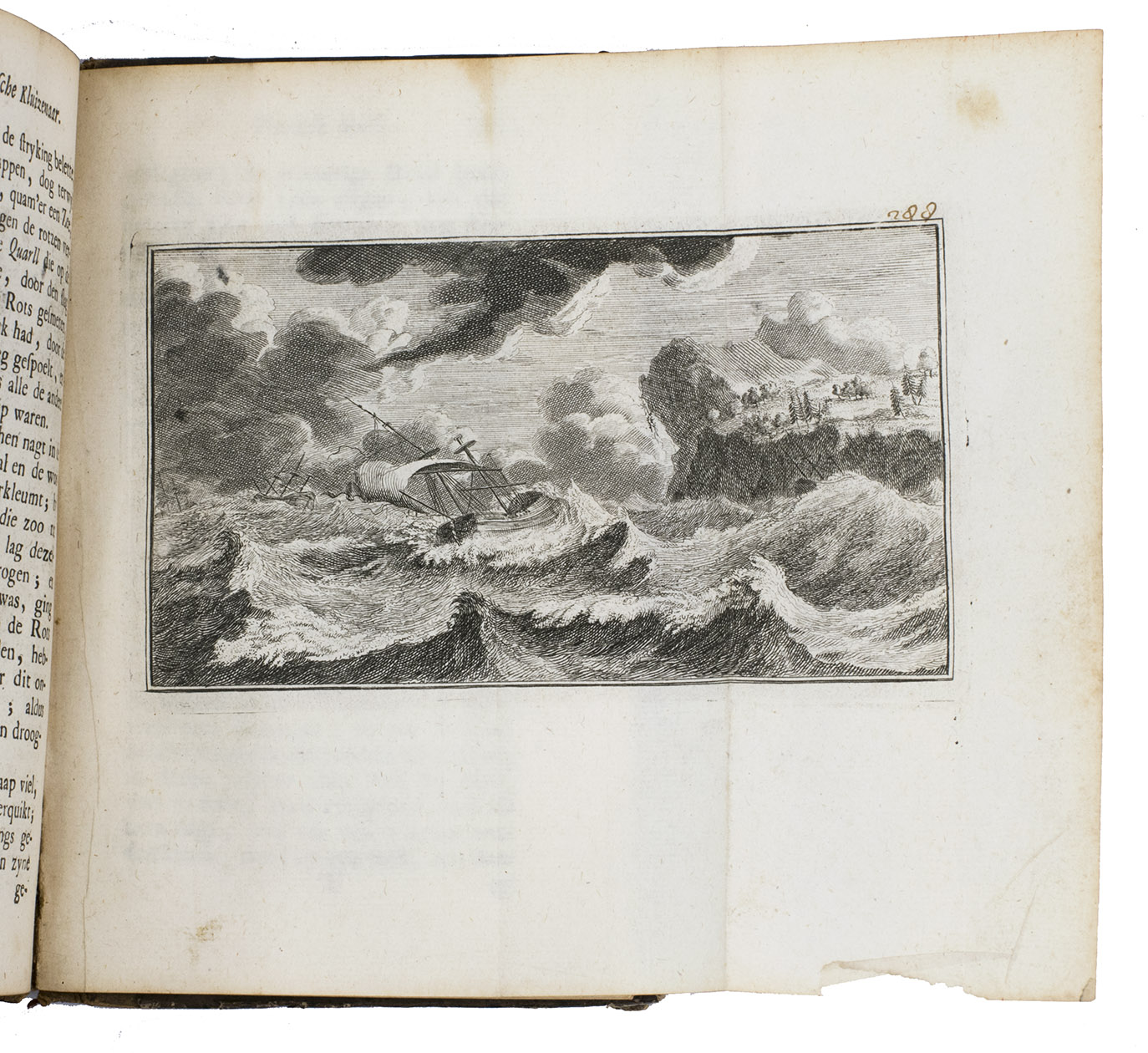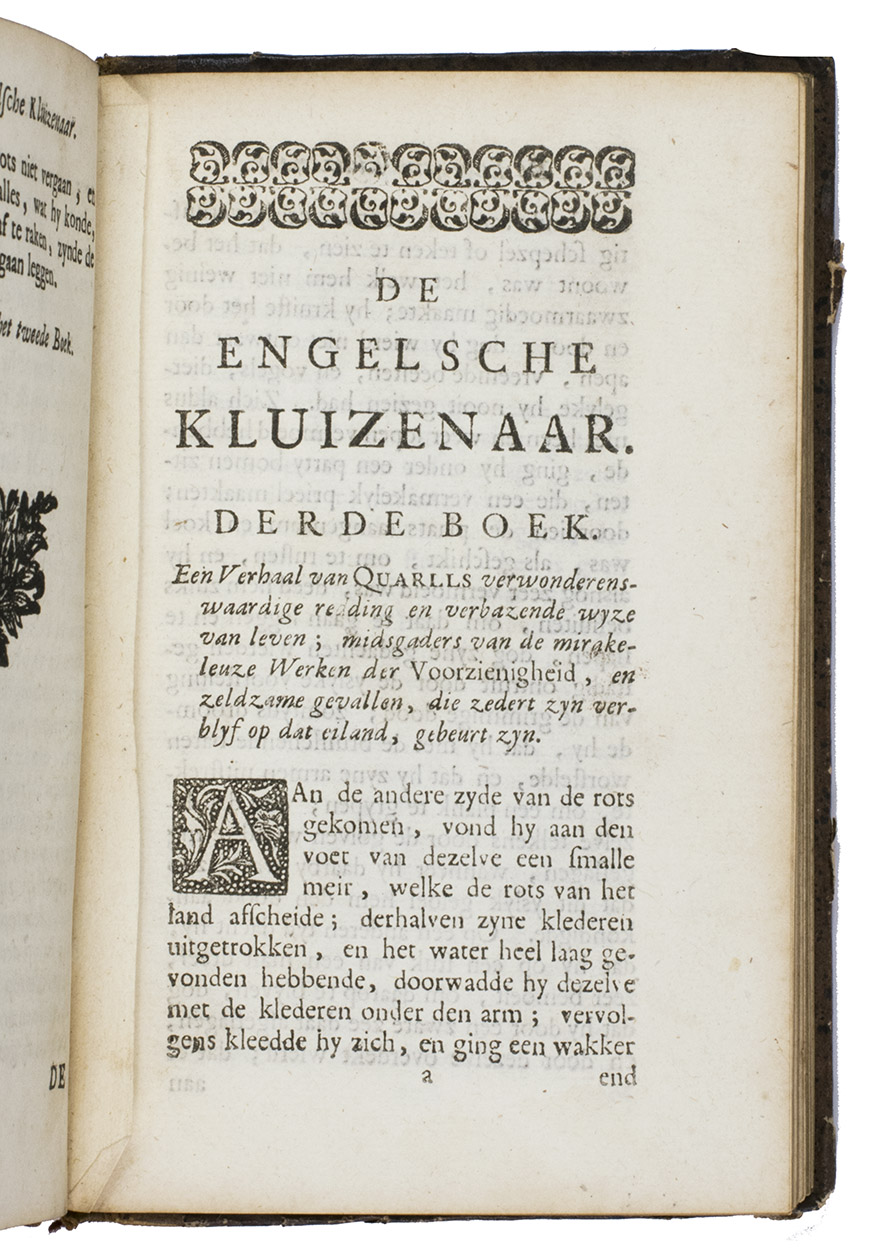[LONGUEVILLE, Peter].
De kluizenaar; of de weergalooze rampen, en verwonderenswaerdige gevallen van Filip Quarll, Engelschman.
Rotterdam, Jan Daniel Beman, 1728. 8vo. With an engraved frontispiece, signed by Collan, a folding map of Quarll's island, and a folding plate of the shipwreck. The title-page is printed in red and black and shows a small woodcut ornamental vignette, the work includes headpieces built up from typographic material, woodcut ornamental tailpieces, and woodcut decorated initials. Contemporary half tanned sheepskin, sprinkled paper sides, and a red paper label on the spine. [16], 292, 189, [1] pp.
€ 2,950
The rare first edition of the Dutch translation of The Hermit: Or, the Unparalleled Sufferings And Surprising Adventures of Mr. Philip Quarll, which was originally published in London in 1727. It is a derivative of Robinson Crusoe and recounts Quarll's solitary and agonizing experiences on a South Sea Island over a span of fifty years. the story captivated readers during the eighteenth century and was widely published in multiple languages across Europe and America.
De kluizenaar contains a vivid tale and not only gained popularity as a castaway tale in 18th-century England, but through translations also in the Netherlands and other parts of mainland Europe. This is no surprise, as it includes the details of Quarll's life, involving criminal activities, seafaring, polygamy, his transformation into a merchant, and him being shipwrecked off the coast of Mexico in 1675. Stranded and forced to be self-reliant, Quarll survived on his island for half a century in the company of a loyal monkey. Eventually, Edward Dorrington, a trader from Bristol, England, embarked on an explorative voyage and encountered Quarll. After sharing his remarkable story with Dorrington, Quarll entrusted him with his diaries but declined the offer to return to England. The work contains three captivating illustrations: the frontispiece depicts the hermit and his monkey gathering firewood, a folding map shows the fictitious island and its landmarks, and the final engraving beautifully illustrates the shipwreck.
With the bookplate of the collection Buijnsters-Smets and the manuscript owner's inscription of M. Buisman on the recto of the first free flyleaf, and a small note in the margin of the folding illustration ("288"). The binding is somewhat worn, some slight foxing and water staining. The lower gutter of the frontispiece is restored on the verso of the leaf. Otherwise in good condition. Buisman 1096; Staverman C 5a; STCN 22034275X (4 copies); Ullrich IV, 13 n; WorldCat 590240897, 66309382, 249247604 (8 copies, including one noted as lost).
Related Subjects:


